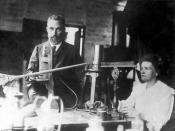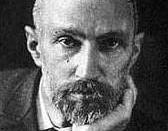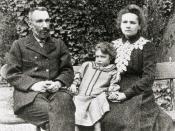Marie Curie was born November 7, 1867, Warsaw, Poland, Russian Empire. From childhood she was remarkable for her prodigious memory, and at the age of 16 she won a gold medal on completion of her secondary education at the Russian lycee.
Her father, a teacher of mathematics and physics, lost his savings through bad investment, Marie had to take work as a teacher and, at the same time, take part clandestinely in the nationalist "free university," reading in Polish to women workers. From her earnings she was able to finance her sister Bronia's medical studies in Paris, on the understanding that Bronia would in turn later help her to get an education.
In 1891 Marie Sklodowska went to Paris and began to follow the lectures of Paul Appel, Gabriel Lippmann, and Edmond Bouty at the Sorbonne. There she met physicists who were already well known--Jean Perrin, Charles Maurain, and Aimé Cotton.
Sklodowska worked far into the night in her students'-quarter garret and virtually lived on bread and butter and tea. She came first in the license of physical sciences in 1893. She began to work in Lippmann's research laboratory. In the spring of1894, she met Pierre Curie. Their marriage (July 25, 1895) marked the start of a partnership that was soon to achieve results of world significance, in particular the discovery of polonium (so called by Marie in honor of her native land) in the summer of 1898, and that of radium a few months later (http://www.crystalinks.com/curie/html) .
Turning her attention to minerals, she found her interest drawn to pitchblende, a mineral whose activity, superior to that of pure uranium, could be explained only by the presence in the ore of small quantities of an unknown substance of very high activity. Pierre Curie then joined her in the work that...


